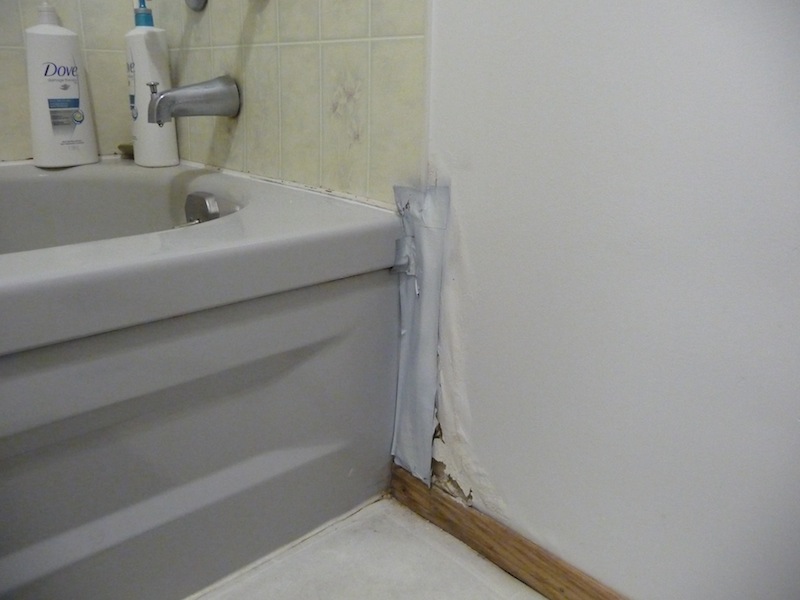Exactly How to Prevent Bathroom Water Damage
Exactly How to Prevent Bathroom Water Damage
Blog Article
What are your concepts on How to Repair and Prevent Bathroom Water Damage?

The shower room is very susceptible for moist accumulation and also possible water damage because of the constant use water in it. This write-up offers simple evaluation techniques to help discovering water damage dangers.
The regular use water in the shower room makes it exceptionally at risk for wet buildup and also possible water damages. By evaluating it on a regular basis, you can lower water relevant problems.
The adhering to collection of assessments is simple to carry out and ought to be done once in every three months in order to maintain your washroom healthy and also to stop possible water problems triggered by the bathtub, the shower, pipeline joints and also plumbing, sinks, cupboards, and the commode
Do not forget carrying out these inspections as well as be extensive while performing them. Remember that these basic evaluations can conserve you a great deal of money by giving early indications for water damages
Tub and Shower
The shower and also tub require unique interest and upkeep. Check the floor tiles as well as replace if fractured. Make certain that there is no missing cement between the tiles. Examine and change broken caulking at joints where the walls meet the flooring or the tub. Clogged drains pipes as well as pipes problems will certainly avoid the bathtub from drying out and might suggest major troubles underneath the bathtub. Consult with a specialist instantly to stop structural damage. Focus on discolorations or soft locations around the tub walls as they might indicate an inner leak.
Plumbing
Signs for water damages are difficult to identify because the majority of pipes are mounted inside the walls.
Pay unique interest to floor covering as well as wall surfaces wetness and spots as they may suggest an invisible plumbing trouble. Check dampness levels in adjacent rooms also.
Sinks and also Cabinets
Sinks and cupboards are revealed to moisture as well as moisture daily as well as are usually neglected. Check regularly under the sink and on the counter top over it. Repair any type of drip in the catch as it might suggest drain issues. Check out the sink, slow draining pipes might show a blocked drain. Replace sink seals if they are split or loosened.
The Toilet
The toilet is a prone water joint. Examine the water lines and search for leaks around the bathroom seat, in the tube, and under the water tank. If you discover any kind of indications of dampness on the flooring around the toilet, check for leakages in the toilet edge and storage tank seals.
Know that hanging commode bowl deodorants raises the chances for blockages.
Water Damage Signs In The Bathroom To Avoid Cleanup
Musty smell
This is one of the easiest signs to catch because musty smells are so odorous. The damp, earthy, moldy smell should be a big red flag. The smell will develop when moisture gets trapped in surfaces, and begins to facilitate mold growth. Leaking pipes under cabinets, inside walls, and behind shower fixtures will cause moisture to stay trapped and not dry, which will lead to mold growth and spread. As soon as you notice any musty smells in your bathroom, have it checked for hidden water damage and cleanup signs.
Visible mold
If the smell isn’t there to give it away, sometimes you will actually see mold growth. Finding mold in your bathroom is a serious problem, because mold is very harmful to your health. By the time mold growth is visible, it also means that water damage has already occurred and been present for some time. The only way the mold problem can be resolved is to find the source of the moisture and get it stopped. To safely and adequately remove mold, you need to have professionals handle the remediation. Do not waste any time in getting mold problems addressed, fixed, and sanitized so that you can protect you and your family from the many respiratory symptoms caused by mold exposure.
Damaged floors
Bathroom floors should be able to withstand some exposure to water while still remaining in good condition. However, when excess exposure or water leaks occur, they will begin to damage even the most water-resistant flooring. If you notice any cracking, bubbling, staining, or warping on your bathroom floors, there is probably a water leak somewhere causing the distortion. If you notice areas of the floor have become softer, or even have a spongy feeling, there is probably damage to the subfloor. Subflooring is typically made up of plywood. When plywood is exposed to water or moisture, it will absorb it. Once it has become saturated, the weight of the excess water will cause the wood to swell and soften. Check the floors in your bathroom frequently to catch any of these sings before they lead to damaged subflooring.
Changes on walls
When water leaks behind walls, it will cause changes in the drywall. Peeling plaster, blistering paint, and soggy wallpaper are all good indicators that excess water is building up behind the wall. Water leaking behind drywall will cause it to swell and be soft to the tough. If you start to notice gaps along the trim of your walls, or where tile meets the wall, it could also be a strong indicator that there is a leak behind the wall. Any changes, distortion, or damage on the walls should be evaluated as soon as you notice it to prevent further water damage and cleanup.

Hopefully you liked our section about Looking for Signs of Water Damage in the Bathroom. Thanks so much for spending some time to read our blog post. Be sure to take the time to distribute this write-up if you enjoyed reading it. We truly appreciate reading our article about How to Repair and Prevent Bathroom Water Damage.
Start Now Report this page